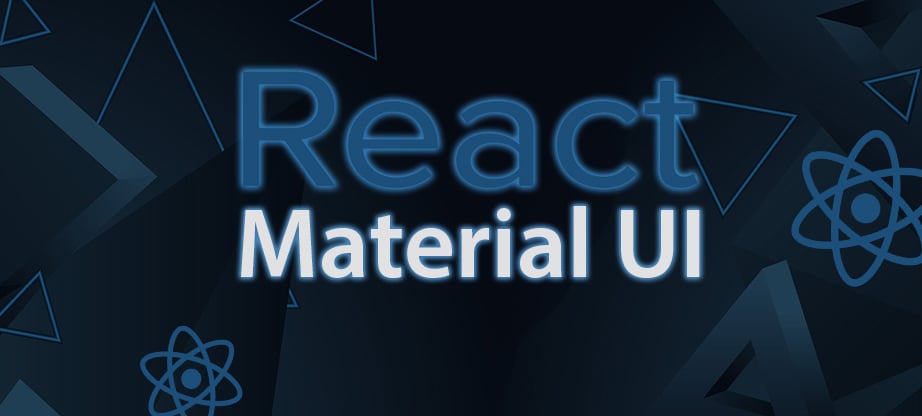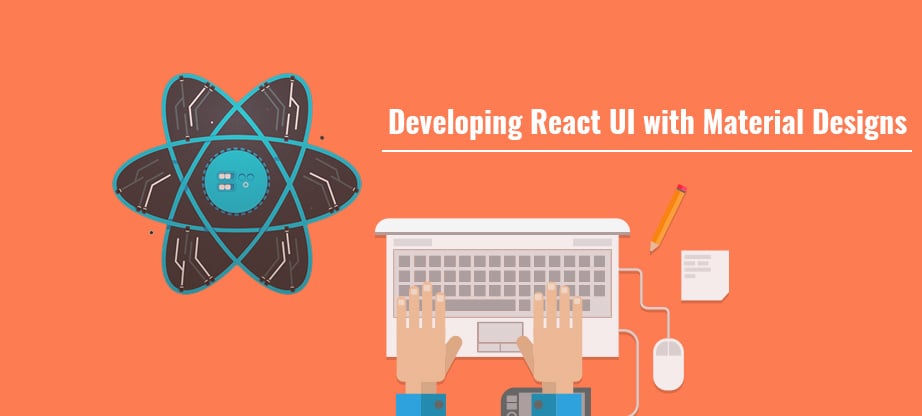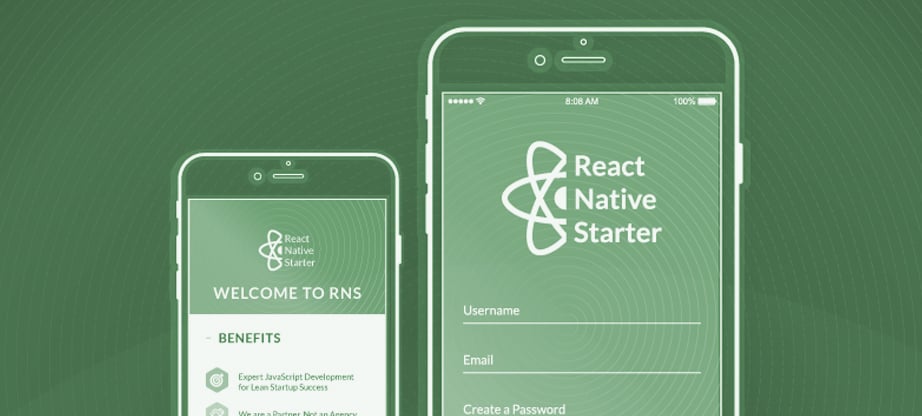Material Design – Guide to Material UI React
Don Norman once said, “Behavioral design is all about feeling in control. Includes usability, understanding, but also the feel”. How is that related to Material UI React Development? Let`s see.

These words mean a lot in this digital era where web and mobile applications affect a major part of our daily life including:
- Ordering a meal,
- Booking a ride to work,
- Communicating with friends,
- Working remotely for clients,
- Planning a weekend, and the list goes on.
The success of an application depends largely on its user interface design and the connection a user establishes once they start using the application. A lot has been tried and tested over the last decade but nothing really made an impact the way Google’s most recent Material design did.
Read 2015’s top web design strategies which were in vogue and led to the rise of Material design.
Material UI design has literally reshaped the way web designers used to think about designing user interfaces for web and mobile applications. Gone are the days of dark shadows and gradient colored headers and footers. The world is bewitched with paper-ink styled clean, minimal and flat layouts.
Today, we aim to explore the rise of Material UI and how Material UI is reshaping the ways in which web and mobile applications are developed.
By the end of this post, we hope to provide our perspective to:
- What is Material UI design
- Why is it so successful
- The evolution of React UI
- What it takes to implement the Material design with React applications
- Material UI React libraries for ReactJS and React Native
Let’s begin…
What is Material Design?
Material Design is a design language introduced by Google way back in 2014 as “a visual language that synthesizes the classic principles of good design with the innovation of technology and science.”
Built originally for the Android application ecosystem and inspired by the study of paper and ink, the essence of “Material” in mobile applications aimed at creating designs that are grounded in reality. A reality which originates from physical surfaces, edges, seams, and shadows that establishes meaningful user interactions.
Since then, evolution has kicked in rapidly and what was once a UI concept limited to Android OS has rapidly evolved to web applications and even IOS apps.
Why is it so successful?
There are 3 major reasons that contribute to the success of Material UI’
- Detail oriented: Material design is detail oriented and as Google puts it – There is no pixel too small to be overlooked when creating an intuitive experience. With its detail-oriented animations, shadows, and edges, the design itself contributes to the brand’s establishment.
- Cross-device compatible: The designs were built to complement Google’s responsive approach for a web application. This means that the UI remains consistent regardless of the device (mobile, tablet or desktop) you are using to access the application.
- Well supported: It is comprehensively documented and wholeheartedly supported by Google with regular updates being pushed at a periodic basis. On top of that many third-party vendors realize the underlying potential and have published their own UI libraries that support material design components.
The Evolution of React UI
Design and technology go hand in hand, and while the material design was gaining ground as the new benchmark for visual interactions, Facebook launched REACT – a JavaScript library that can be used as the “View” for any MVC(Model View Controller) based framework.
The key features of this language were it’s component-based approach and a virtual DOM that keeps track of changes in the UI and implement them to the actual DOM without having to regenerate it – hence optimizing UI speed by manifolds.
On top of that, at the code level, ReactJS is a blend of HTML and JavaScript aka JSX which is an extension of the traditional ECMAScript. This extension added the ability to embed HTML code within JavaScript, hence making it more flexible as well as easier to understand.
ReactJS was an instant hit for developing web application front-ends and just after a couple of years, Facebook introduced it’s younger sibling – React Native to develop native mobile applications following the same componentized approach.
Reach Native has a lot of potential to take your business to the next level. You can take help of react native experts to build powerful mobile applications at low cost. With a seamless UI, you get a full-fledged platform to reach your market. It is cross-functional. You can use it on any platform without spending on development for each.
Developing Material UI React

The idea of developing React (JS/Native) based application UI with Material UI aka Material UI React is selling like hotcakes. React UI built as a Material design means you get access to:
- Modern and user-friendly UI
- An application that runs with supreme speed
- Quick development time
- Highly robust component-based code which is easier to extend as well as track bugs
But What’s the Best Way to Implement a Custom React Template?
Certainly developing everything from scratch is an option, but that would eat up a lot of coding time.
With so much underlying potential, the React community has been highly active off lately and continuous open source contributions are being made in the form of libraries for both ReactJS as well as React Native to establish Material UI React.
Using these libraries, React developers can get access to customizable components for the complete interface including:
- Form styles
- Headers
- Footers
- Buttons
- Animations etc.
If you have decided to use React for your web or mobile application and plan on implementing a custom Material UI, then we would always recommend you to choose one of the following libraries.
While the core objective for all these libraries are the same, i.e to provide out of the box reactjs components which you can use in your Material UI React theme, the difference mostly lies in the component styling and in most cases the styling language. We are not highlighting any of these libraries in any way and you can pick your choice based on their key features.
Recommended Material UI design libraries for ReactJS:
Material UI

Key features:
- Provides all the necessary components with a variety of attributes
- Easily customizable.
- Great support
- JSS based component styling
- 20+ components out of the box
.
React MD
Key Features:
- SaSS based style styling
- 30+ components out of the box
- Default inclusion of media queries for each component
- Comprehensively documented
- Fully open source but with fewer contributions so far.
React Toolbox
Key Features:
- CSS modules based component styling
- 30+ components out of the box
- Highly customizable
- Easily themeable components using out of the box react CSS themer
- Really well documented
Recommended Material UI design libraries for React native:
React Native Elements
Key features:
- Cross-platform compatible styling
- Comprehensive documentation
- Well supported
- Easily customizable
- 15+ components out of the box
React Native Material Kit
Key features:
- Around 12 basic components out of the box
- Well documented and consistently maintained
- More interactive customization options
- Well documented customization API
Material UI React – Final Words
While working with material libraries is a simplified way to create Material UI React applications for Reactjs and React native material UI, it has its own issues as well. Depending upon a library would mean that you are now dependent upon the component styling of the library – and don’t even ask what it takes to switch libraries when you have already implemented an application.
However, that’s pretty much it. It all boils down to choosing the correct library for your needs. We duly hope that we were able to provide some perspective on how material design works for React UI. What are your thoughts on the libraries we have recommended? Do let us know in the comments section below.
Using a React Component Library
This means that we’d use a library that has pre built React components. The library takes care of the styling and the React bit.
You can checkout the material-ui or react-md for an example of using this approach.
Working with pre-built React components is much faster but has its own issues. You’re now depending on this library for functionality and style of your component. Depending on the library, customization may become a challenge.
Material Design can give you guidelines to make better, more tactile user interfaces. It can inspire your designers to think about the hierarchy of information.
To summarize – if you’re using Material Design as a starting point to design better user interfaces, do it!
You shouldn’t use Material Design if you’re trying to keep up with the latest trend. Trends keep changing and your users probably care about other things more. To summarize – if you’re trying to reinvent yourself with Material Design, think twice. It’s not an instruction manual to create brands.





